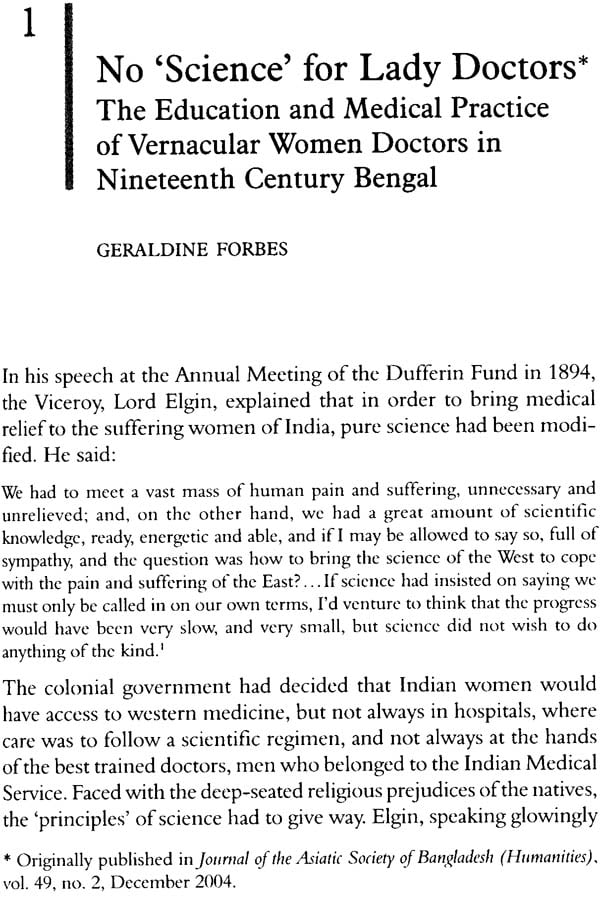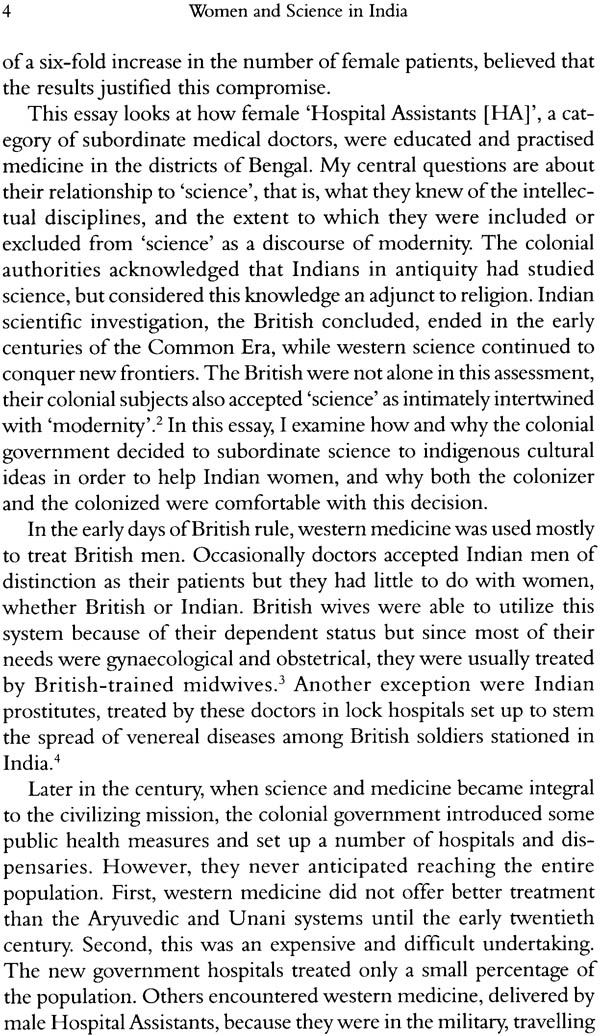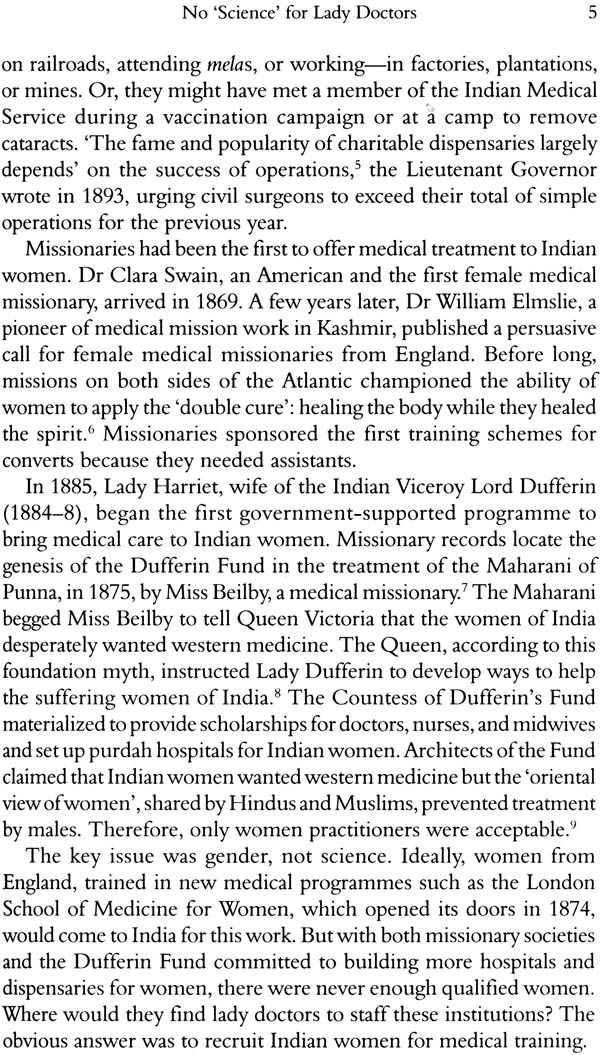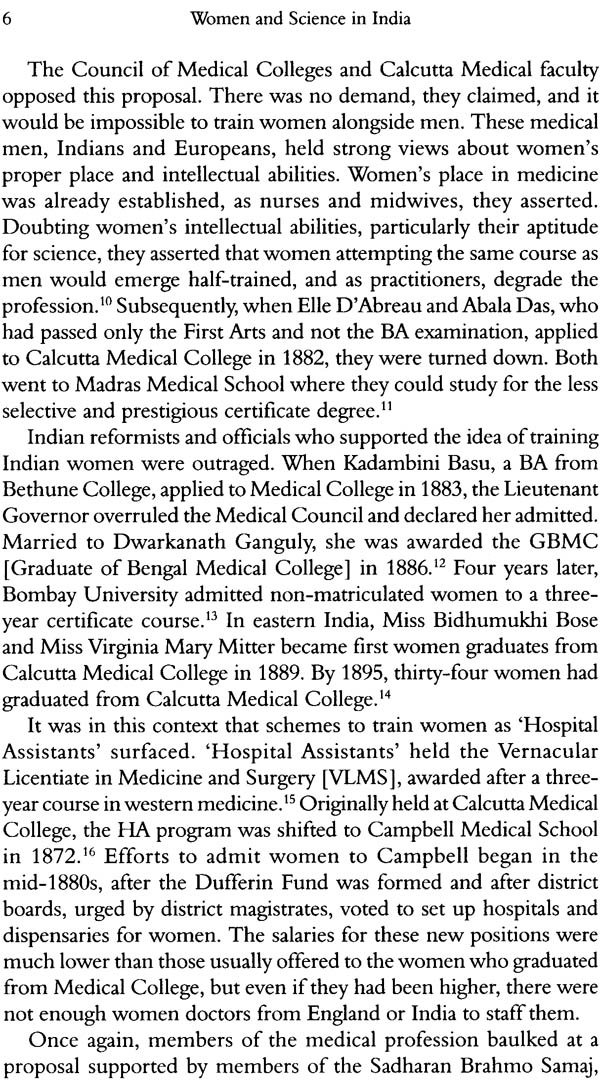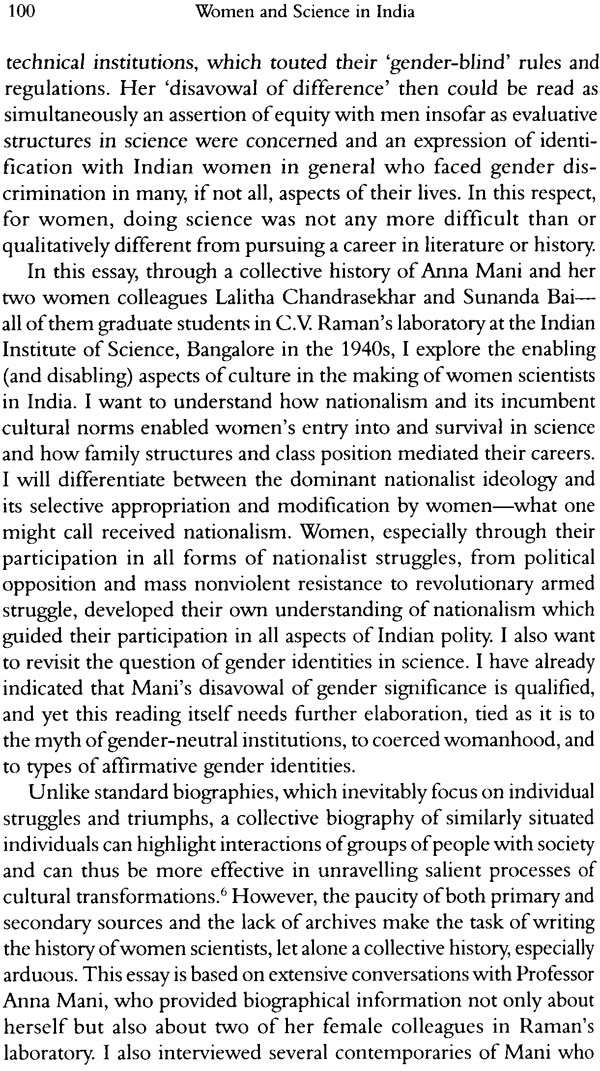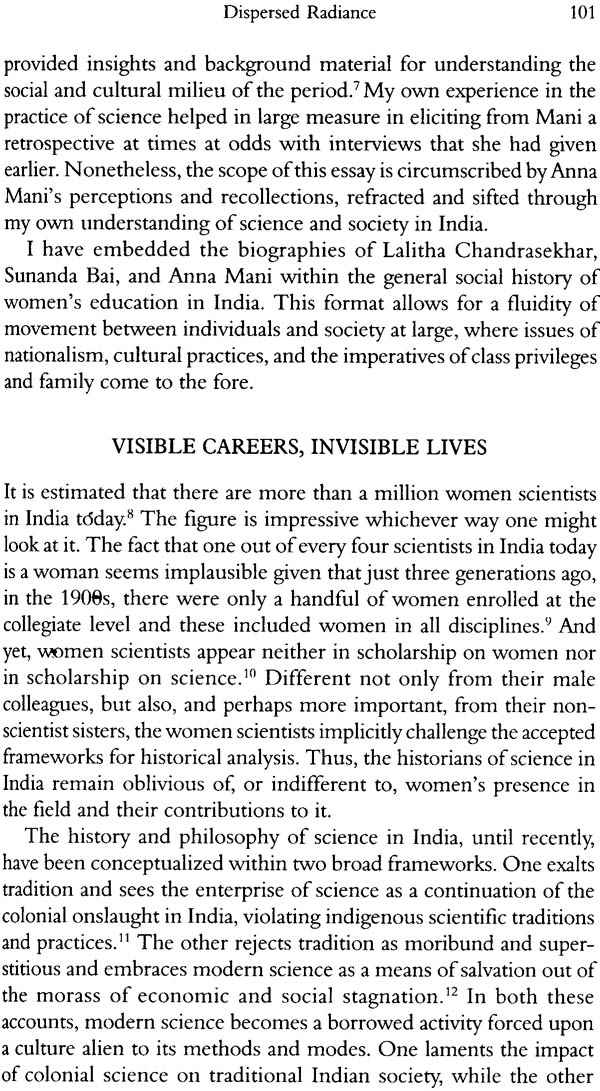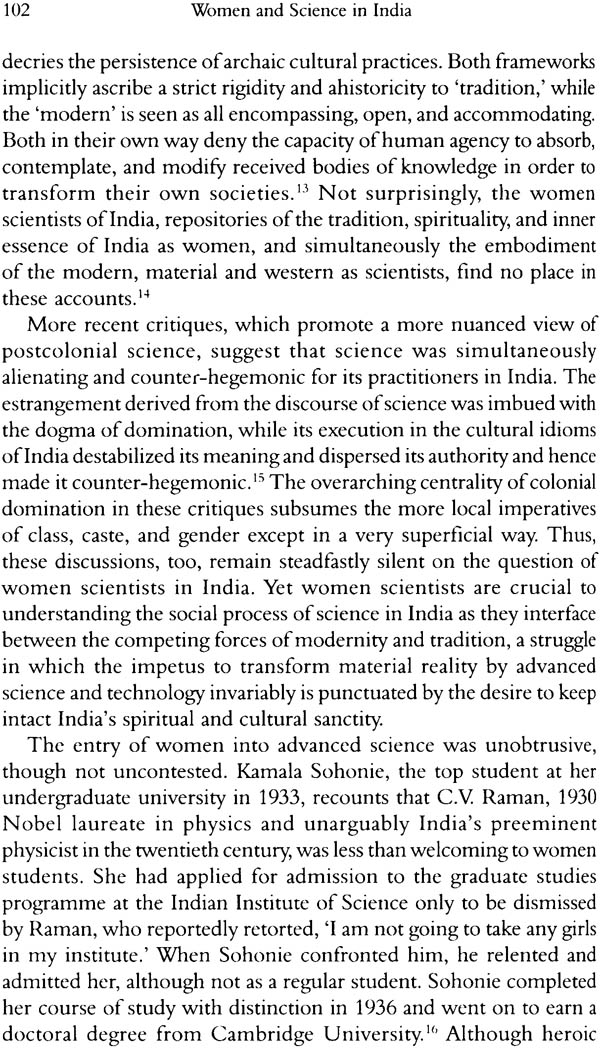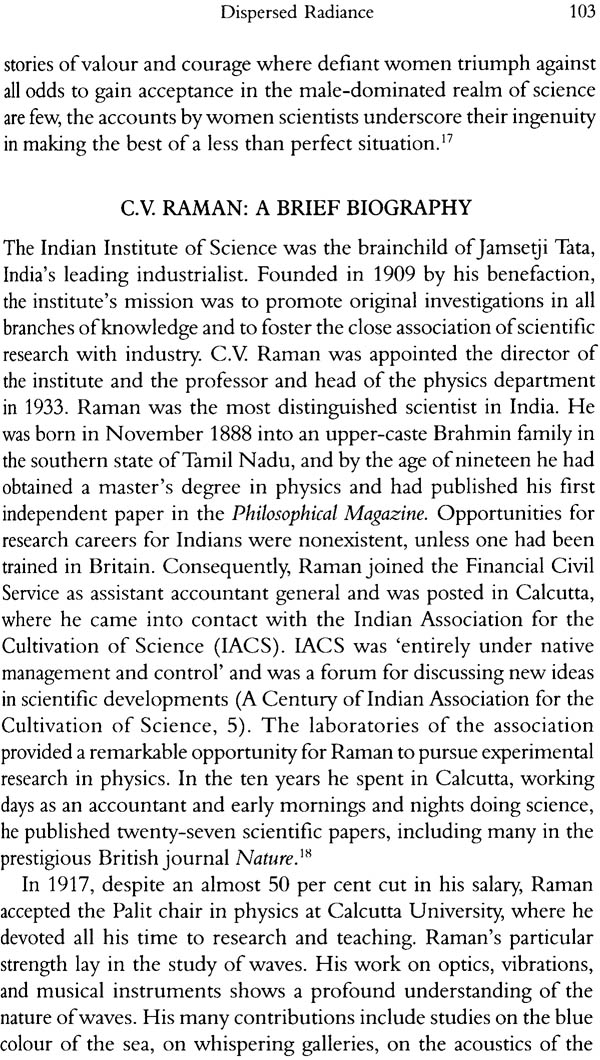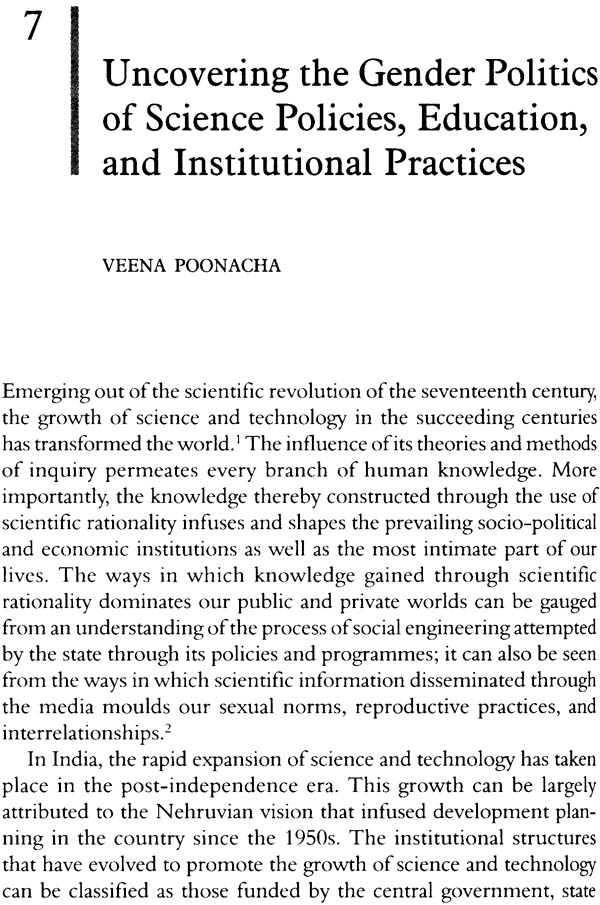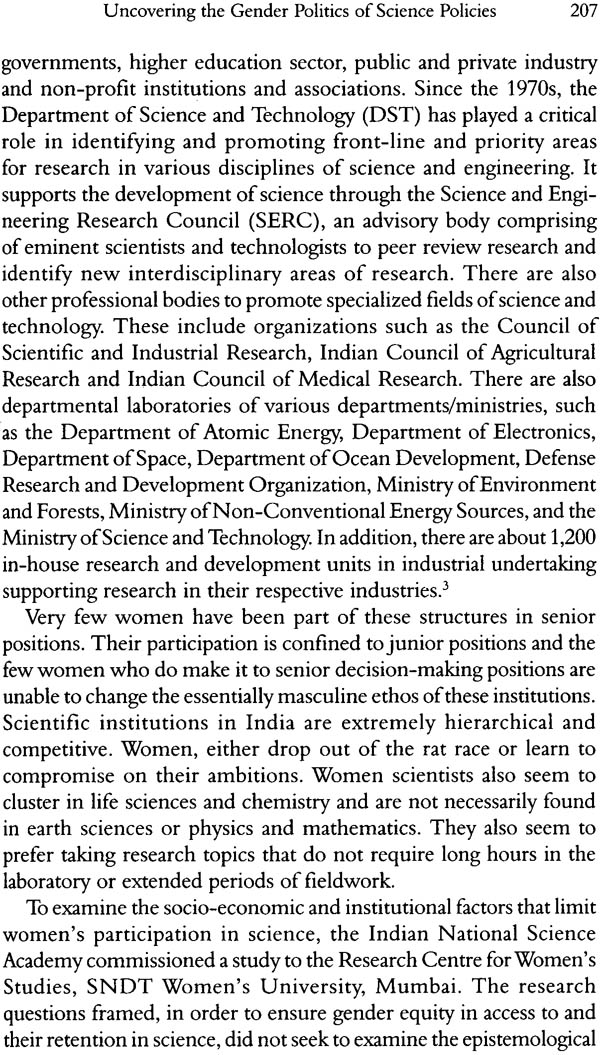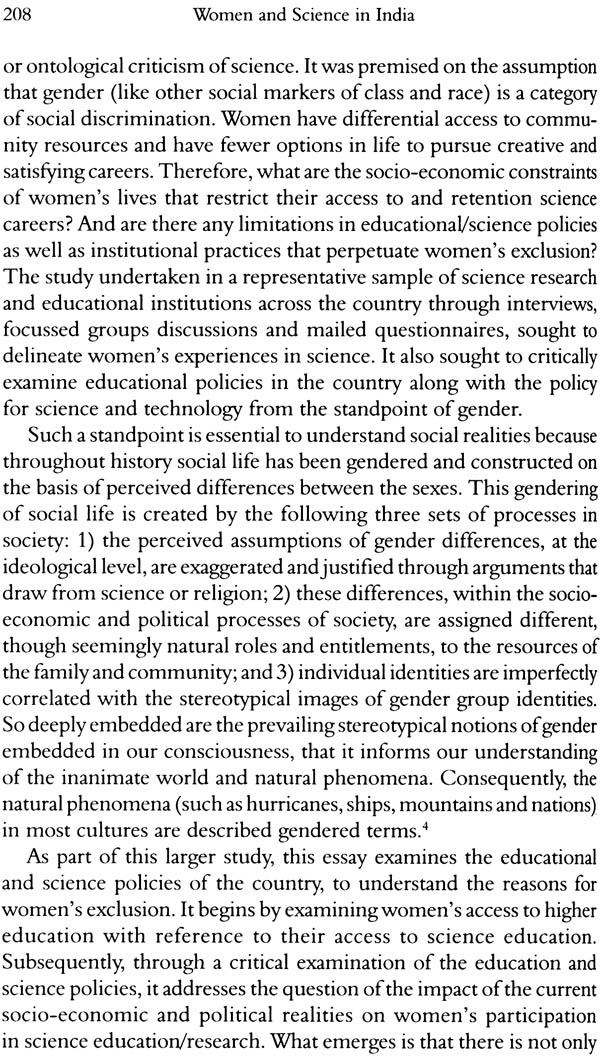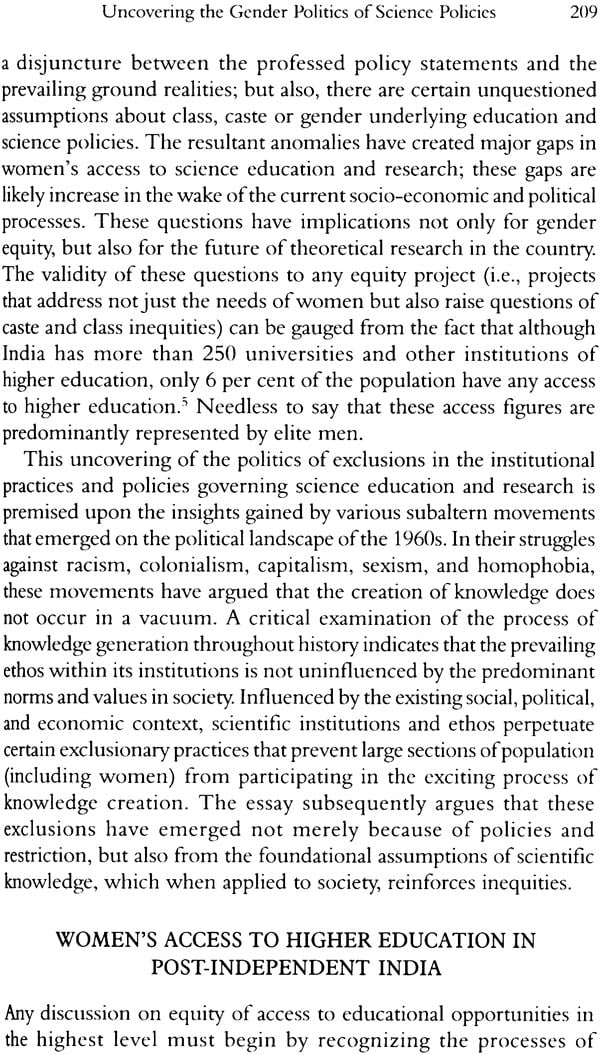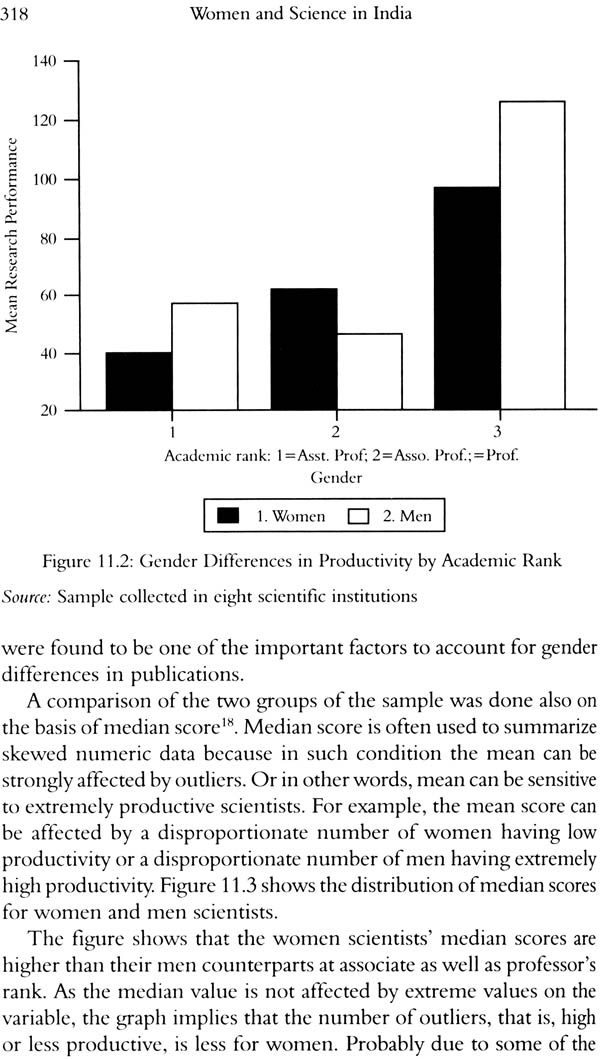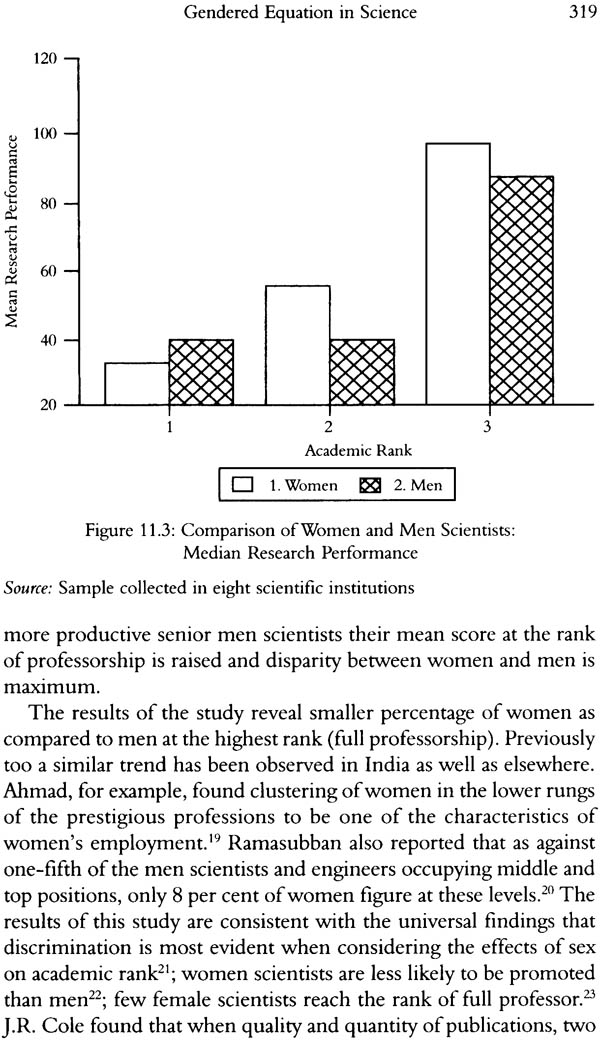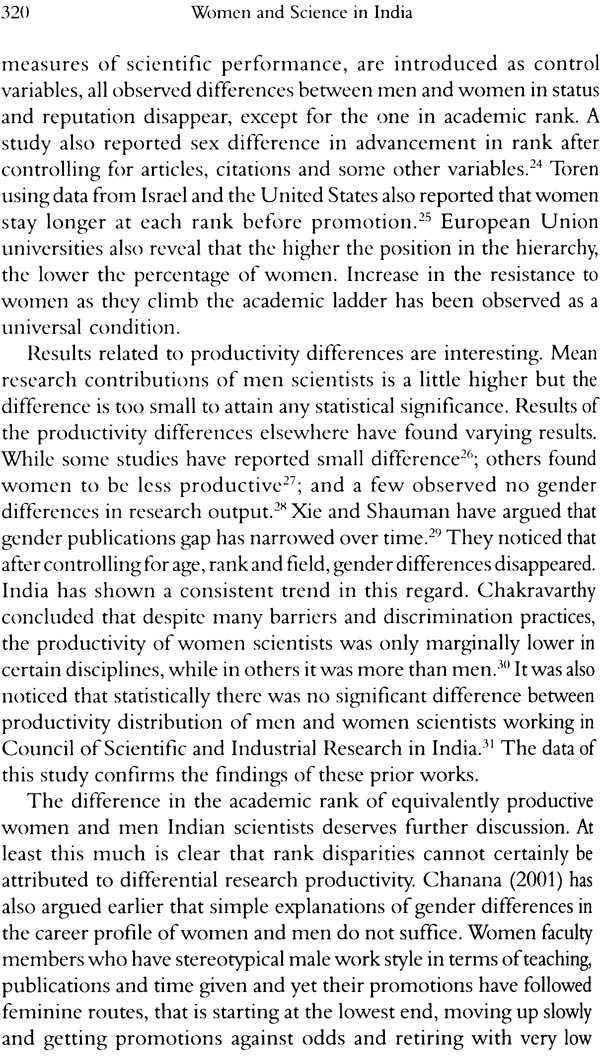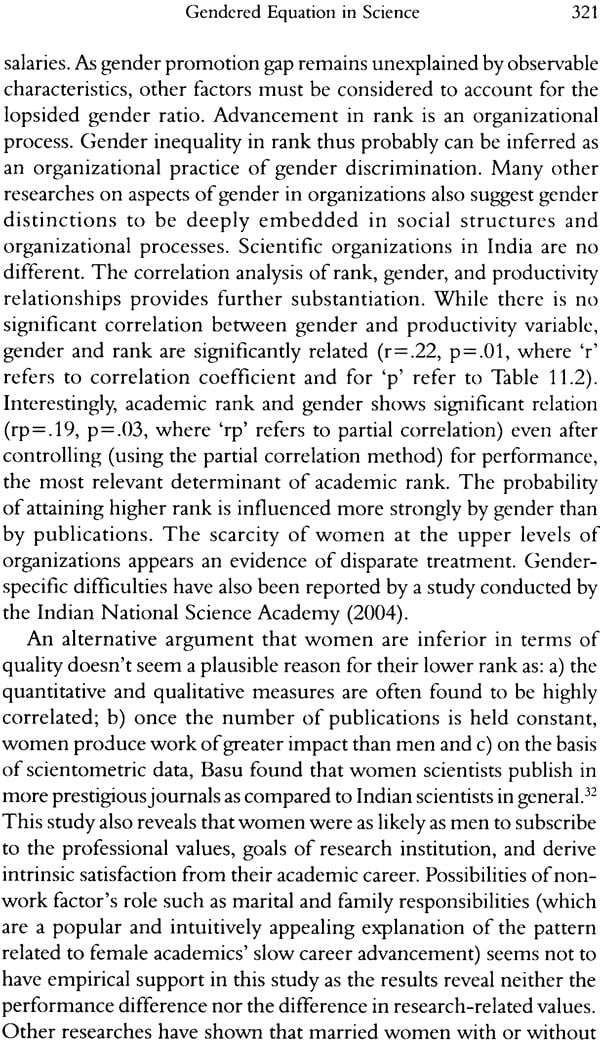
Women and Science in India: A Reader
Book Specification
| Item Code: | IDK902 |
| Author: | Neelam Kumar |
| Publisher: | Oxford University Press, New Delhi |
| Language: | English |
| Edition: | 2009 |
| ISBN: | 9780195697056 |
| Pages: | 381 |
| Cover: | Hardcover |
| Other Details | 9.0"X 5.7" |
| Weight | 560 gm |
Book Description
Gender profoundly influences scientific activity and the professional lives of women. What are the underlying factors that cause gender gap in institutions of science in India? Has the scenario improved or have new factors of discrimination increased the divide? Women and Science in India examines the scientific, engineering, and medical professions in India from these perspective.
Divided into two broad sections, this reader explores the history, epistemology, as well as quantitative and qualitative aspects of the position and careers of women in science,. The first section investigates the historical background while the second provides the contemporary context and sociological explanations and deals with the economic parameters that determine the status of women in scientific professions.
The essays probe the challenges faced by women in science and the impact of globalization on their careers. The first three essays, trace the historical linkages and explore the discourses and institutions that have shaped the lives of women in colonial times. The volume also analyses the applicability of western theories of gendered science and feminism for women in India. The connections between their works lives, the demands of their profession, and domestic responsibilities are examined to unravel the influence of these factors on women's scientific productivity and research. Participation of women in education and labour market of science and technology as well as statistical analyses of their scientific careers are the other significant areas discussed.
In her introduction, Neelam Kumar locates these essays in the emerging field of the study of the professions of women in science. This interdisciplinary volume will be an important resource for scholars, teachers, and students of history, sociology, psychology, science, and gender studies.
Neelam Kumar is Scientist, National Institute of Science Technology and Development Studies (NISTADS), New Delhi.
Women's unequal positions in various spheres of social life is an important area of study for social scientists. Many articles and books have been written about the position of women in a patriarchal society but works on gender and science remain scarce. This book may be useful towards this purpose.
This collection provides an overview of India women engaged in science. The aim of this volume is to explore historical, sociological, and economic issues related to women and science in the Indian context. It looks at the careers, participation, and attainments of women in the scientific, engineering, and medical professions in India. While some of the essays were presented at an international conference on women in science, others were published in some important journals. The volume brings together the writings of prominent academics and researchers who discuss gender and science in the context of Indian culture, society, and politics and explore the relevance of gender theories. The inevitable association with western feminism, the status of women in colonial and independent India, and the challenges to Indian women in line with the global and universal problems are discussed at length. The book aims to deepen our understanding of why, despite the existence of legal and constitutional qualities, women are still subject to discrimination in science. Essays presented in this volume include perspectives from science and gender studies as well as from psychology, history, sociology, and cultural studies. The volume also has an exhaustive bibliography.
I thank the Journal of the Asiatic Society of Bangladesh, Journal of British Studies, Bulletin of History of Medicine, Meridians, and Journal of Women and Minorities in Science for granting me the permission to reprint the papers published by them. The papers published in these journals appear to be of great use and significance to readers interested in gender studies in the Indian context. I am grateful to the anonymous referees for their meticulous and incisive comments. I thank the Director and all my colleagues at NISTADS for help and constant encouragement. Finally, the volume would not have taken its present shape without the generosity of the contributors and. Of course, the efforts of the editorial colleagues at the Oxford University Press.
Gender bias has characterized the institutions, practices, ethos, and substance of science for centuries. It has always been central to the ways in which social processes of science have been navigated. Various ideological constructions of gender through different eras have restricted female access to science. Eighteenth century west, for example, debated over the difference in the 'nature' of the female and the male-whether women were mentally and socially inferior to men or they were equal but different or at least potentially equal! For a long time women were perceived as physically and intellectually weak and emotionally too unstable to endure, for example, the rigours of medical education and fierce competition of practice. Science, however, took a new meaning in the nineteenth century and became devoid of its philosophical and theological concepts. Gradually, in the later part of this century, the doors of universities, scientific societies, and research laboratories were opened to women. One of the first scientific professions that women gained access to was medicine, in the face of tremendous resistance in most European countries. The leading British and American universities with a few exceptions barred the entry of women until World War I. Harvard Medical School did not have a women student till 1945! In Germany medical schools remained closed to women until 1900. Though the twentieth century had more positive voice than the previous one, it too kept women in subordinate positions and denied them full access to education and career outside their homes.
Feminist debates about science, however, made a fundamental change in the way in with science came to be understood and practised. The turn to gender as an analytic category led to new ways of bringing gender into discussions of power, culture, and politics that seemed to have obvious implications of the study of science. Thought recent statistics on women's participation in science scientific professions show an increase in fields such as medicine, they are still under-represented in the natural science engineering, and mathematics. This gap persists despite increasing gender equality in educational qualifications and credentials. Science continues to be characterized by low number of females, clustered in disciplines considered feminine and confined to the ranks of invisible, poorly paid assistants in scientific institutes from where they could participate in decisions related to scientific practices. Typically, women in science resemble a pyramidwith many women at the bottom and a few at the top in various parts of the world, including India.
The explanations on gender difference are yet unclear, scarce, and fragmented, gender differences in scientific productivity, for example, continue to be a puzzle and differences in rank attainment remain an unexplained phenomenon. However, one may refer to certain socio-psychological explanations of women's underrepresentation in higher professional positions. There could be three such approaches to this question. One of course deals with the structural barriers about which much has been said and written. The second refers to the normative barriers. Here one encounters the age-old pontifications on the domesticity of women and their suitability for feminine occupations. The third approach dwells on the cognitive difference between genders, which virtually tries to rationalize why women show lower confidence in demanding situations. Which-ever explanation one may opt for, historically the lager perception hovers around the view that the 'breasted' would suckle and look after the home while the 'bearded' would 'philosophize'
| Preface | ix | |
| Acknowledgements | xi | |
| Introduction | xiii | |
| Neelam Kumar | ||
| | ||
| 1. | No 'Science' for Lady Doctors: The Education and Medical Practice of Vernacular Women Doctors in Nineteenth Century Bengal | 3 |
| Geraldine Forbes | ||
| 2. | Contesting the Zenana: The Mission to Make 'Lady Doctors for India' 1874-85 | 21 |
| Antoinette Burton | ||
| 3. | The Politics of Gender and Medicine in Colonial India: The Countess of Dufferin's Fund, 1885-88 | 55 |
| Maneesha Lal | ||
| 4. | Dispersed Radiance: Whome Scientists in C.V. Raman's Laboratory | 98 |
| Abha Sur | ||
| | ||
| 5. | How Exportable are Western Theories of Gendered Science? A Cautionary World | 137 |
| Carol C. Mukhopadhyay | ||
| 6. | Women in Science in India: Has Feminism Passed Them By? | 178 |
| Lalita Subrahmanyam | ||
| 7. | Uncovering the Gender Politics of Science Policies, Education, and Institutional Practices | 206 |
| Veema Poonacha | ||
| 8. | Triple Burden on Women Academic Scientists | 232 |
| Namrata Gupta and A.K. Sharma | ||
| 9. | A Glass Ceiling or a Glass Cage? Re-examining Women in Medicine | 258 |
| Alpana Sagar | ||
| 10. | Women's Participation in Scientific and Technical Education and Labour Markets in India | 290 |
| Malathy Duraisamy and P. Duraisamy | ||
| 11. | Gendered Equation in Science: An Organizational Aberration? | 310 |
| Neelam Kumar | ||
| Select Bibliography | 331 | |
| Contributors | 349 |
